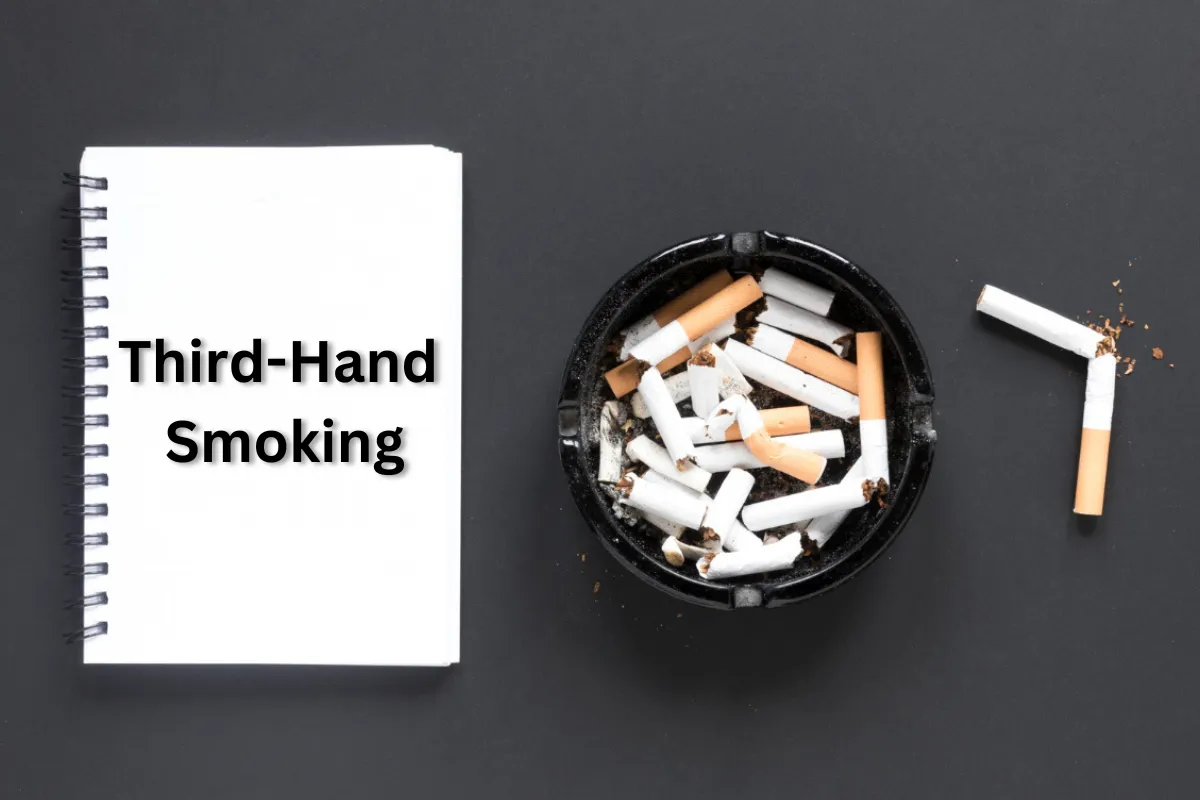All forms of smoking are extremely harmful to one’s health. Almost half of cigarette smokers who do not give up die from tobacco usage, which is the main element in cigarettes. According to the World Health Organisation (WHO), tobacco use kills over 8 million people each year, including 1.03 million non-smokers who are exposed to secondhand smoke and pass away.
As per the US Centres for Disease Control and Prevention (CDC), second-hand smoke is the smoke that is inhaled by individuals who do not smoke or who burn tobacco products. Serious health concerns, such as heart disease, stroke, and respiratory disorders, can be brought on by this kind of smoking. Third-hand smoke, on the other hand, is a lesser-known but no less dangerous type of smoke exposure.
Understanding Third-Hand Smoking
The phrase “third-hand smoking” refers to the lingering poisons from tobacco smoke that get embedded in interior environments’ carpets, furniture, clothing, and human skin. These traces of tobacco smoke accumulate over time and pose major health risks.
What Constitutes Third-Hand Smoke?
Third-hand smoke contains approximately 250 compounds, many of which are harmful and carcinogenic, according to the American Lung Association (ALA). Any level of exposure to these residues is dangerous because they can linger for weeks, months, or even years. Because secondhand smoke particles continue to settle on interior surfaces, smoking in front of an open window does not lessen the effects of secondhand smoke.
Health Risks of Third-Hand Smoke
Impact on Children
Third-hand smoke poses a significant risk to children, particularly those under the age of six. Coughing, phlegm difficulties, and other respiratory disorders are more common in them. Early nicotine exposure may affect lung development and wound healing, as well as raise the chance of smoking in later life.
General Health Risks
Some studies indicate that third-hand smoke exposure might damage DNA and may be a risk factor for certain malignancies, however research on this topic is still ongoing. Over time, the accumulating chemicals alter and create new, dangerous molecules like carcinogens.
Specific Vulnerable Groups
- Infants and Children: They frequently touch and mouth contaminated surfaces, increasing their risk of infections, pneumonia, and asthma.
- Adults: Prolonged exposure can lead to cancers in the lungs, mouth, pancreas, kidneys, and bladder.
- Pregnant Women: Inhaling third-hand smoke can transfer harmful substances to the fetus, potentially causing respiratory issues at birth.
Preventing Third-Hand Smoke Exposure
To minimise the risks associated with third-hand smoke, it is crucial to avoid any form of tobacco smoke. Here are some effective strategies:
- Stay Away from Houses and Public Areas Where People Smoke:
- Don’t let people smoke inside of houses or cars.
- Motivate smokers to quit completely.
- Vacuum and wash surfaces, clothing, bedding and toys that have come into contact with smoke on a regular basis.
By implementing these measures, you can significantly reduce the risks associated with third-hand smoke and protect your loved ones from its harmful effects.
Disclaimer: This material, including advice, provides general information only. It is in no way a substitute for a qualified medical opinion. Take the methods, and claims mentioned in this article as suggestions only; DNP India does not confirm or refute them. Consult a doctor before implementing any such suggestions/ treatment/medicine/diet.
Keep watching our YouTube Channel ‘DNP INDIA’. Also, please subscribe and follow us on FACEBOOK, INSTAGRAM, and TWITTER
